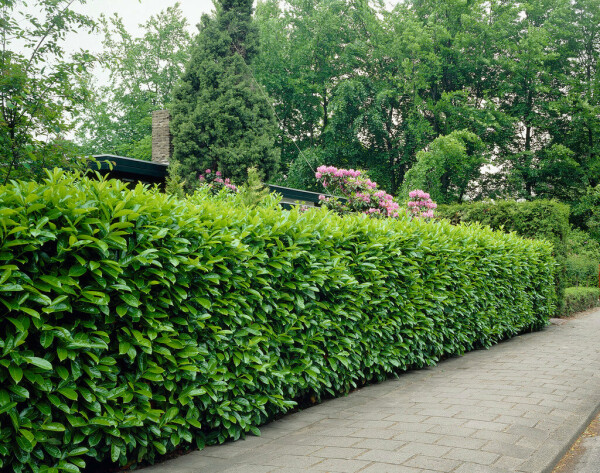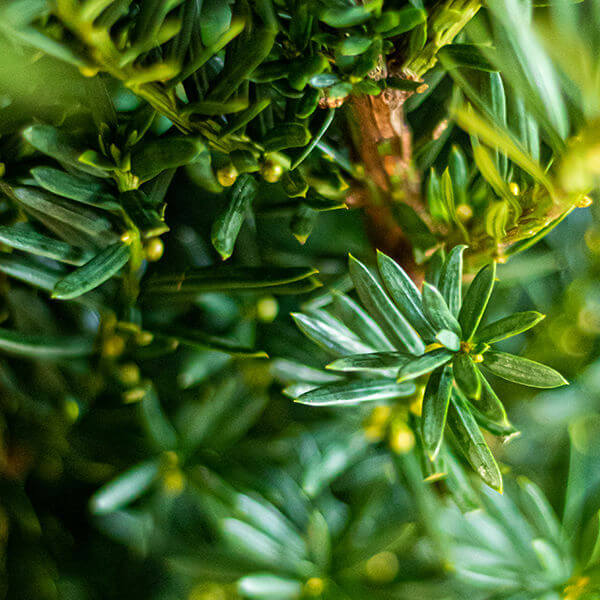Hedge Plants For Noise Buffering
Improve your garden's appeal with rich hedge ranges such as Yew (Taxus), Thuja, Laurel, Photinia, and Bamboo, commemorated for their structural stability and ecological advantages.
Yew and Thuja supply evergreen protection and winter season resilience, while Laurel uses fast development and broad, aromatic leaves.
Photinia includes seasonal beauty with its lively red foliage, and Bamboo provides a low-maintenance, peaceful ambiance.
These hedges enhance air quality, decrease noise, and produce tranquil, private areas.
Appropriate planting, spacing, and upkeep guarantee energetic growth and ecological consistency.
Explore how these lavish varieties can raise your garden's beauty and wellness.
Key Takeaways
Change Your Garden With Lush Hedge Varieties
- Select Yew for its thick, evergreen development and exceptional longevity.
- Select Laurel for its fast growth and broad leaves, guaranteeing fast privacy.
- Pick Photinia for its vibrant seasonal foliage, which turns a striking dark red.
- Use Bamboo for a low-maintenance, winter-hardy hedge with visual appeal.
- Space plants 2-3 per meter and prune routinely for optimum growth and health.
Popular Hedge Plants
When changing a garden with lavish hedge varieties, it's vital to consider popular hedge plants such as Yew, Thuja, Laurel, and Photinia due to their distinct attributes and benefits.
Yew (Taxus) is highly respected for its durability and thick, green growth, making it a prime choice for withstanding landscapes.
Thuja is kept in mind for its evergreen foliage and robust winter durability.
Photinia includes seasonal vibrancy with red leaves that darken with time, creating dynamic visual appeal.
Laurel provides quick development and aromatic, broad leaves, ideal for quick privacy.
Furthermore, Bamboo is an exceptional option for ambiance, offering a low-maintenance, winter-hardy option that improves the garden's aesthetic with its sophisticated, swaying walking canes.
These choices deal with a range of horticultural requirements and choices.
Benefits of Garden Hedges
Garden hedges offer a wide variety of advantages, making them an important addition to any landscape. These natural barriers are cost-effective to implement and offer considerable wind security, improving air flow and contributing to noise reduction. The dense foliage of hedges like Thuja and Beech makes sure personal privacy by blocking presence, developing a secluded and serene environment.
Hedges also play a crucial role in microclimate regulation, supplying a steady environment that promotes plant development and lessens temperature changes. Their elaborate leaf structures filter pollutants, enhancing air quality and adding to a healthier garden environment.
Additionally, hedges excel in noise decrease, taking in and deflecting sound waves to lower ambient sound levels. This dual functionality of offering both visual and acoustic personal privacy boosts the general tranquility and visual appeal of any garden.
Planting and Upkeep Tips
For an effective hedge, careful preparation of the planting area is essential. Make sure the soil has appropriate pH and drainage to support strong root development.
Area the plants properly for the chosen types. Water the hedge often during its preliminary growth stage, adjusting as required with seasonal changes.
Carry out a methodical pest control and disease avoidance technique, utilizing organic or chemical treatments when necessary. Frequently inspect for aphids, termites, and fungal infections.
Apply mulch to retain wetness and suppress weeds. Seasonal pruning promotes dense development and air circulation, vital for plant health.
Following these guidelines will help you cultivate a lively, well-maintained hedge that improves the appeal of your garden.
Spacing and Trimming Guidelines
Spacing and Cutting Standards
Proper spacing and trimming are important for cultivating healthy, aesthetically appealing hedges. Adequate spacing guarantees each plant gets enough nutrients, light, and airflow.
Follow these guidelines for ideal hedge upkeep:
- Spacing: Position hedge plants 2-3 plants per meter to motivate robust development.
- Pruning Techniques: Regular pruning is vital for keeping wanted hedge height and shape. Cut new growth in summertime and cut back older wood during winter season.
- Seasonal Care: Change cutting schedules and approaches according to seasonal requirements to ensure plant health.
- Hedge Height: Regularly monitor and trim to maintain the wanted hedge height and achieve uniform visual appeals.
Adhering to these actions will guarantee your hedge grows, boosting both the appeal and performance of your garden.
Picking the Right Hedge
Picking the Right Hedge
Picking the suitable hedge involves assessing factors such as mature height, foliage density, and environmental strength. Effective hedge plant choice requires understanding each types' development qualities and site-specific versatility.
For example, Yew (Taxus) offers exceptional durability and dense growth, while Thuja is significant for its winter season durability. Additionally, thinking about maintenance requirements is essential; fast-growing types like Laurel or Privet need routine trimming, whereas low-maintenance options like Bamboo or Ivy may be more suitable for those seeking very little maintenance.
Environmental aspects such as soil type, light accessibility, and moisture conditions need to also guide the choice process. This mindful approach makes sure the picked hedges will flourish, providing both practical and aesthetic advantages to the garden landscape.
Delivery and Planting Advice
To ensure your hedge plants thrive, they must be delivered by specialized couriers and planted promptly upon arrival.
Follow these vital steps for effective planting:
- Soil Preparation: Enrich the soil with organic matter to enhance drainage and nutrient material.
- Planting Depth: Develop a trench twice the width and equivalent to the depth of the root ball.
- Watering Techniques: Water thoroughly after planting, keeping the soil regularly moist but not filled.
- Mulching: Apply a layer of mulch to keep wetness and reduce weeds.
Customer Assistance and Service
Offered the essential function of prompt help in horticultural pursuits, our customer assistance group is available six days a week through telephone, email, and social networks to use expert guidance and promptly resolve any concerns. Their dedication to quick reaction times makes sure consumer satisfaction by dealing with inquiries connected to plant health, optimal planting methods, and maintenance schedules.

Reaction Time
Six days a week
This extensive support group, reinforced by a stellar 9.3/ 10 customer ranking, highlights our dedication to boosting the gardening experience for each client.
Frequently Asked Concerns
The Length Of Time Does It Consider Hedge Plants to Establish?
Hedge plants generally require one to 3 years to end up being fully established, with the specific period varying by types and growing conditions.
Reliable care during this vital period is essential for robust development. Consistent watering, vigilant weed control, and proper fertilizer application are critical in promoting strong root development.
For instance, fast-growing species like Laurel might establish more quickly, while slower-growing ranges such as Yew might take longer. Thorough upkeep accelerates the facility process, leading to dense and healthy hedges.
What Are the Best Hedge Plants for Personal Privacy?
The question of the finest hedge plants for personal privacy involves assessing evergreen and deciduous options.
Evergreen hedges like Thuja, Laurel, and Cypress supply year-round coverage, making sure continuous personal privacy.
In contrast, deciduous hedges such as Beech provide seasonal personal privacy, shedding leaves in chillier months.
Secret maintenance pointers for privacy hedges consist of routine trimming, fertilizing in spring, and correct spacing-- generally 2 to 3 plants per meter.
In addition, consistent watering and persistent weed elimination are crucial for promoting healthy, thick development.
Can Hedge Plants Draw In Wildlife to My Garden?
Yes, hedge plants can bring in wildlife to your garden by offering necessary benefits like shelter, food, and nesting sites, therefore improving regional biodiversity. Yew, holly, and laurel are excellent for bring in birds, while ivy supports a range of insects.
Nevertheless, it is necessary to note that there are some disadvantages, such as increased upkeep to manage pests and routine maintenance. Thoroughly selecting and maintaining hedge varieties can assist stabilize these downsides and advantages, ultimately fostering a sustainable and vibrant community in your garden.
Are There Any Flowering Hedge Plants Available?
Yes, there are flowering hedge plants offered that can improve the charm of your garden.
For example, Elaeagnus, also called Olive Willow, produces fragrant white flowers in the fall, adding a touch of elegance.
Photinia, another popular choice, showcases vibrant red leaves that mature into a rich green, creating a vibrant visual result throughout the seasons.
To make sure these plants grow, it's vital to practice correct pruning strategies and seasonal upkeep, such as trimming new growth in the summer season and cutting down in the winter season.
These steps will help maintain the health and aesthetic appeal of your blooming hedges.
How Do I Avoid Bugs in My Hedge Plants?
To prevent pests in hedge plants, use natural bug control techniques and preserve proper hedge care. Present useful bugs like ladybugs, which victimize damaging insects, to create a balanced environment.
Routinely inspect your hedges for indications of infestation and promptly remove any afflicted parts to prevent the spread. Make sure the health of your hedges by applying well balanced fertilizers and offering adequate water.
Use mulching to retain soil wetness and correct spacing to minimize plant stress and promote robust development. These practices collectively assist in lessening pest problems and maintaining a healthy hedge.
Conclusion
In essence, selecting the right hedge varieties such as Yew, Thuja, and Laurel can change any garden into a peaceful sanctuary. These plants provide year-round plant, enhance aesthetic Additional reading appeal, and deal practical advantages like sound reduction and wind defense.
Proper planting methods, precise spacing, consistent watering, and seasonal cutting are essential for optimal development.
Trustworthy shipment services and expert client assistance ensure a smooth experience from purchase to planting, making it simpler than ever to raise your outside space.
Garden hedges provide a multitude of advantages, making them an important addition to any landscape. These natural barriers are economical to implement and offer substantial wind defense, enhancing air circulation and contributing to noise decrease. The thick foliage of hedges like Thuja and Beech makes sure personal privacy by blocking visibility, creating a peaceful and remote environment.

Pruning Methods: Regular pruning is vital for preserving preferred hedge height and shape. Trim new development in summer season and cut back older wood throughout winter season.
Comments on “Hedge Plants For Summer Color”